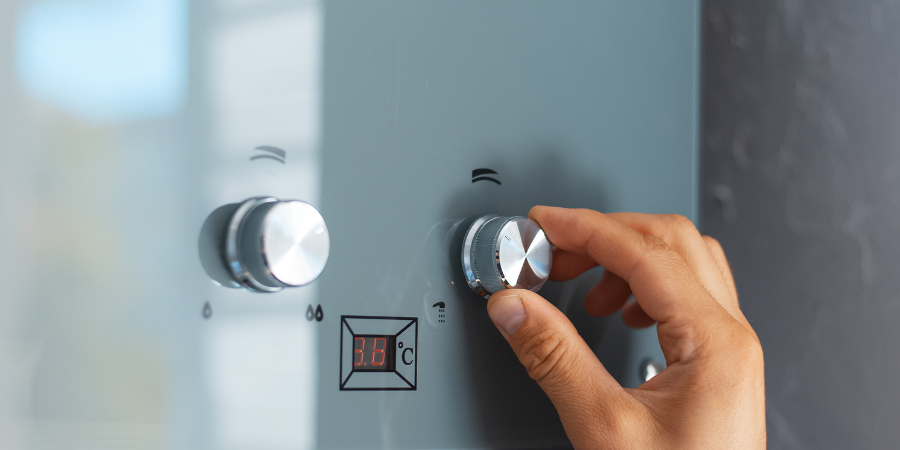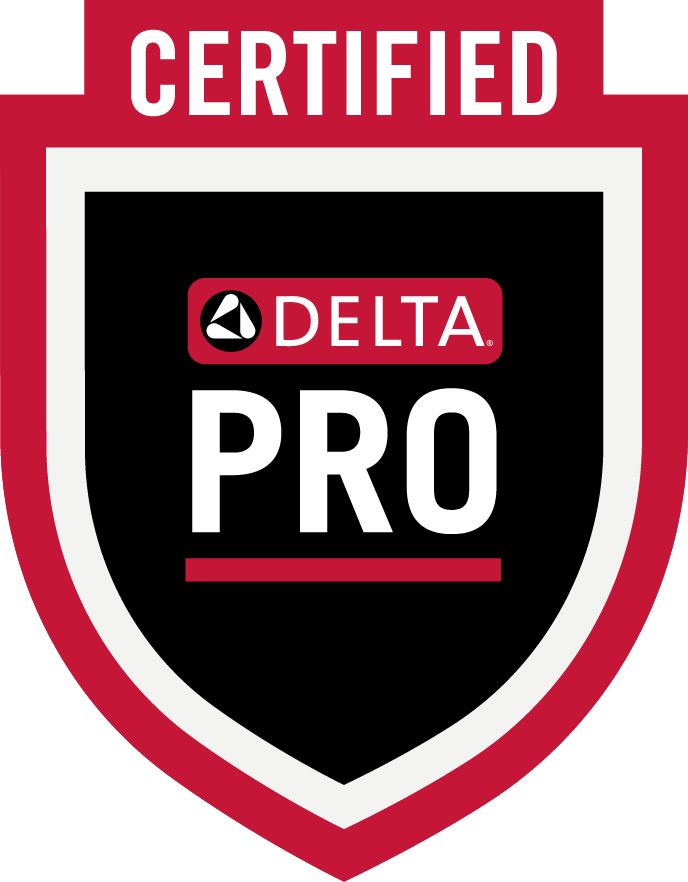Tankless water heaters, also known as on-demand water heaters, have revolutionized the way households access hot water. Unlike traditional water heaters that store and continuously heat a large volume of water that is stored in a tank, tankless models heat water only when needed, offering potential energy savings and space efficiency.
However, despite their benefits, tankless water heaters are not without their issues. This article delves into the advantageous features of tankless water heaters, compares them with traditional models, discusses problems that are common with these types of water heaters, and provides strategies to mitigate these issues. Read on to learn more!
Features of a Tankless Water Heater
Tankless water heaters are lauded for their efficiency and modern features. They can be whole-home systems or individual units can be installed to meet appliances that carry a high demand for hot water production.
On-Demand Hot Water
One of the most significant advantages is their ability to provide hot water on demand. When a hot water tap is turned on, cold water travels through a pipe into the unit, where either a gas burner or an electric element heats the water instantaneously. This process ensures a continuous supply of hot water, making cold showers a thing of the past.
Requires Less Space
Another notable feature is their compact size. Tankless units are significantly smaller than traditional water heaters, which require large tanks to store heated water. This space-saving design allows for installation in various locations, including closets and tight utility spaces. These systems are favored in smaller homes, apartment buildings, or multi-family structures.
Energy Efficient
Furthermore, tankless water heaters are highly energy-efficient. Since they only heat water when needed, they eliminate the standby heat losses associated with traditional water heaters, which continuously maintain the temperature of stored water whether it gets used or not.
Comparing Tankless to Traditional Water Heaters
When comparing tankless water heaters to traditional models, several differences emerge. Neither one of these systems is best but should be judged against your family’s individual hot water needs.
Standby Heat Loss Is Costly
Traditional water heaters store between 20 to 80 gallons of water, constantly heating it to maintain a set temperature. This process, known as standby heat loss, leads to significant energy consumption as the heater cycles on and off to maintain the water temperature. This increase in energy costs must be factored in when deciding which system to install.
In contrast, tankless water heaters eliminate standby heat loss by heating water only when required. This on-demand heating can result in lower energy bills, particularly for households with lower hot water usage. However, for larger households or homes with high simultaneous hot water demands, a single tankless unit may struggle to keep up, potentially requiring the installation of multiple units.
Expected Lifespan
Another point of comparison is the expected lifespan of each heater type. Tankless water heaters typically have a longer lifespan, often lasting over 20 years compared to the 10-15 years for traditional units. These figures are based on normal wear and tear and assume professional maintenance to maximize their functional lives.
Common Problems with Tankless Water Heaters
Despite their advantages, tankless water heaters are not without their challenges. Again, professional maintenance can reduce these issues.
Cold Water Sandwich
One common issue is the “cold water sandwich,” where users experience a burst of cold water between intervals of hot water. This happens because the heater needs a moment to activate and begin heating the water when turned on again shortly after use.
Mineral Buildup
Another prevalent problem is mineral buildup, particularly in areas of the country that are affected by hard water. Over time, minerals like calcium and magnesium can accumulate in the heater, reducing efficiency and potentially causing damage. Regular descaling is essential to mitigate this issue but adds to the maintenance burden.
Inefficient Flow Rates
Flow rate limitations can also pose a problem. Tankless heaters have a maximum flow rate, and if the household demand exceeds this rate, the unit may not supply enough hot water. For instance, running multiple showers and appliances simultaneously can stretch the unit’s capacity, leading to inconsistent water temperatures. The flow rate must be factored in and determined by calculations by a professional plumber with knowledge of this potential inefficiency.
Mitigating Problems with Tankless Water Heaters
A professional plumber is needed to combat the negative features of a tankless water heater. These issues can be complex, and rectifying them requires adherence to complicated codes and regulations.
Buffer Tanks And Recirculation Pumps
To address the cold water sandwich issue, homeowners can install a small buffer tank or a recirculation pump. A buffer tank stores a small amount of heated water, ensuring immediate hot water availability when the faucet is turned on. A recirculation pump, on the other hand, keeps hot water circulating through the pipes, reducing wait times and providing consistent temperatures.
Water Softener And Descaling
Mineral buildup can be managed through regular maintenance. Installing a water softener can significantly reduce the presence of minerals in the water, thereby minimizing scale accumulation. Additionally, scheduling annual descaling and cleaning can help maintain the unit’s efficiency and prolong its lifespan.
Increase The Flow Rate
To cope with flow rate limitations, homeowners should consider their household’s hot water demand and install multiple units if necessary. Alternatively, choosing a tankless water heater with a higher flow rate can better accommodate simultaneous hot water usage. Proper sizing and professional installation are critical to ensure the system effectively meets the home’s hot water needs.
Looking To Install Or Replace A Traditional Water Heater with A Tankless Model?
Tankless water heaters offer numerous benefits, including energy efficiency, continuous hot water supply, and a compact design. However, they also present challenges, such as the cold water sandwich effect, mineral buildup, and flow rate limitations.
Understanding these potential issues and implementing mitigation strategies can help homeowners maximize the advantages of their tankless water heaters. Regular maintenance, proper installation, and adequate system sizing are essential to ensuring the longevity and efficiency of these modern water heating systems.
For residents considering an upgrade to tankless water heaters or needing maintenance on their existing units, consulting with professional plumbers like those at OVC Plumbing and Drain can provide tailored solutions and expert advice to keep your system running smoothly.
Give us a call so we can schedule a tankless water heater installation. You will enjoy unlimited hot water, which is a dream come true for many homeowners looking for relief from their current ineffectual water heating system. Let us guide you through the process!






